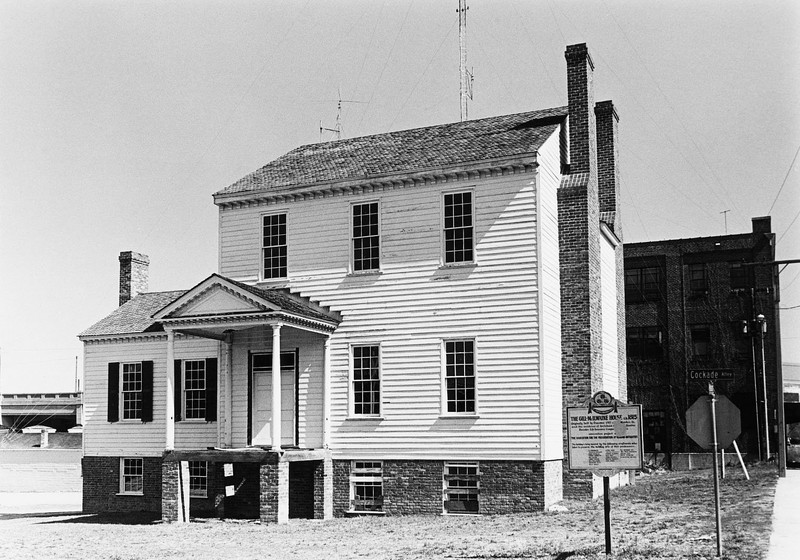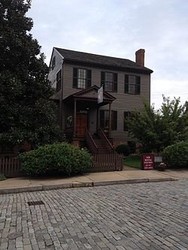The McIlwaine House
Introduction
Text-to-speech Audio
Images
McIlwaine House at its prior location, before move to Market Square in the early 1970s

McIlwaine House at Market Square

Backstory and Context
Text-to-speech Audio
This Federal-style frame residence was built around 1794 by Erasmus Gill and was later owned by George H. Jones, Mayor of Petersburg, in 1815-16. It takes its name from Archibald Graham McIlwaine, a Petersburg industrialist and financier, who made it his residence from 1831-78. The McIlwaine family lived in the house until it was relocated to its present site.
In 1971 the McIlwaine House was scheduled for demolition by the Virginia Department of Highways as part of a road project; however, in 1972 the Association for the Preservation of Virginia Antiquities acquired the structure from the Commonwealth and moved the house eight blocks to the present Market Square site, in a zoned historic preservation district established by the City of Petersburg. For 37 years, the McIlwaine House sat dormant as one of Petersburg’s unrestored historic treasures until restored by its present owner Mr. Alexander C. (Sandy) Graham, Jr.
A fascinating feature is that the interior was made entirely of wood by highly skilled craftsmen, with no plaster ornamentation used in the design. The current owner has replaced or repaired damaged woodwork to replicate the missing original elements.
Another discovery was the original paint color of the parlor wing (known as the “Petersburg Room”). Under 20 coats of white paint, a brilliant coral was found and has been recreated to restore the room to its early grandeur. Also discovered were the original faux-oak wainscoting below the chairrail and the faux-marble on the baseboards. Paint analysis was done by Colonial Williamsburg Foundation’s paint conservator in all rooms on the first floor, and the current paint colors match the original colors. The basement was previously used as the City Visitor Center and has been converted into a wine bar.
One characteristic of the McIlwaine interior is the craftsman's or client's preference for wood. There is no plaster, lead, or ceramic ornamentation in the design. All these materials were readily available to the Petersburg craftsmen but there was a conscious preference for the chisel, gouge and plane. Throughout the main block the woodwork consists of simple but elegant late Adam style moldings. The 20 x 22 foot parlor in the 1 1/2-story wing is embellished with sophisticated moldings and carvings in linear geometric Adam style. On the north wall the chimney piece is flanked on either side by segmental arches with keystones. The arches spring from fluted pilasters and half-round stop - fluted colonettes . The undersides of the arches are reeded and have repeating circular patterns . The cornice consists of crown molding over fret and reeded patterns. The single entrance door architecture consists of stop-fluted pilasters beneath carved acanthus leaves which are modeled more like tobacco leaves.
Sources
Pollock, Edward and Beckwith, T.S. Historical and Industrial Guide to Petersburg, Virginia. Petersburg, VA: 1884.
Scott, James G. and Wyatt, E.C., IV. Petersburg’s Story. Petersburg: VA: 1960
Reynolds, Richard N.B. “The McIlwaine House of Petersburg.” Staff research paper, Association for the Preservation of Virginia Antiquities. Richmond, VA: February 1973.
